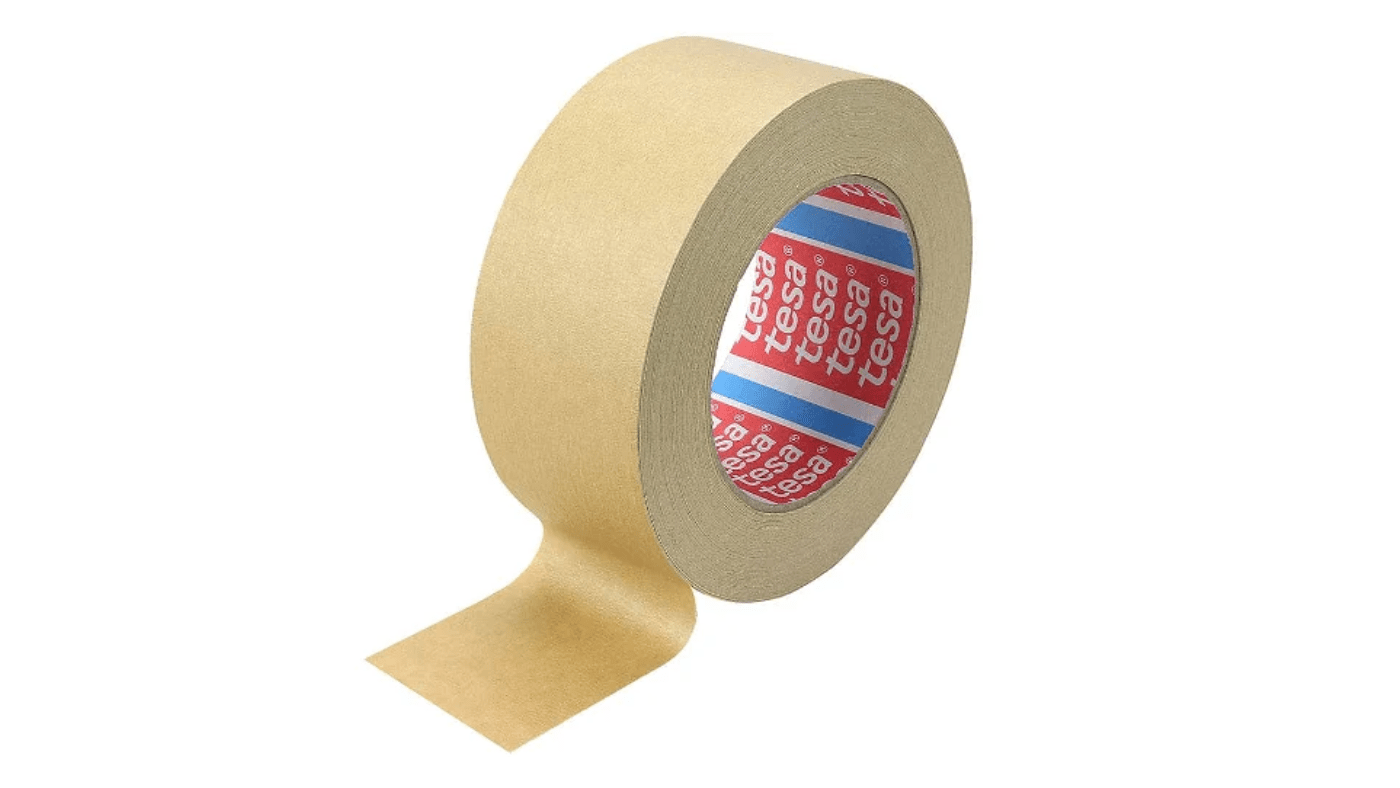In recent years, the trend of using paper tape has been growing due to the increasing environmental awareness. When it comes to paper tapes, the two most common types on the market are water-activated paper tapes vs self-adhesive paper tapes. What are the differences between these two types? How to choose the right type to balance the price and environmental friendliness that your business is aiming for? This article will provide you with specific answers.
- What is Water Activated Tape (WAT)? How to Use Water Activated Tape Effectively
- What is Self-Adhesive Paper Tape? How Does Self-Adhesive Tape Work?
- 9 Common Types of Tape That You Should Know
Water-Activated Paper Tape
To assess the environmental benefits of water-activated paper tape, we'll delve into three key aspects: its composition, sustainability advantages, and operational considerations.
Composition: Water-activated paper tape prioritizes environmental responsibility throughout its lifecycle. The primary material is paper, a readily available and renewable resource. Furthermore, the adhesive utilizes natural ingredients, such as starch, to create a secure yet ecologically sound bond.
Sustainability Advantages:
- Biodegradable and Compostable: Water-activated paper tape exhibits superior end-of-life characteristics. Unlike some conventional tapes, it degrades naturally, minimizing landfill waste and contributing to a more sustainable waste management cycle.
- Recyclable: Both the paper backing and the natural adhesive are fully recyclable. This facilitates seamless integration with existing cardboard recycling processes, promoting resource efficiency.
- Embraces Renewable Resources: The foundation of water-activated tape, paper, is a readily renewable resource. Trees are a naturally replenishing source, making this tape a responsible choice for businesses committed to long-term environmental stewardship.
Operational Considerations:
- Water Activation: While the natural adhesive offers distinct environmental benefits, it requires an additional activation step compared to pressure-sensitive tapes. Water is needed to activate the adhesive prior to sealing the box. This may introduce slight workflow modifications for some applications.
- Application Time: Achieving optimal adhesion strength with water-activated tape requires a brief drying period after application. While still efficient, this may not be ideal for high-volume operations where speed is paramount.
Overall, water-activated paper tape is a great solution to replace conventional tapes like the plastic ones.

Self-Adhesive Paper Tape
When it comes to self-adhesive paper tape, to clarify their sustainability, we will discuss also on 3 key aspects: its composition, usability advantages and sustainability considerations.
Composition: This tape prioritizes convenience with a pre-applied adhesive, typically synthetic. While the paper backing remains a renewable resource, the adhesive introduces a sustainability consideration.
Usability Advantages:
- Effortless Application: No water activation is needed, streamlining the sealing process. This translates to faster application and increased efficiency, especially for high-volume operations.
- Adaptable Performance: Self-adhesive paper tape functions consistently across various environments, including dry or dusty areas. This versatility simplifies packaging regardless of the setting.
Sustainability Considerations:
- Biodegradability: The environmental impact hinges on the specific adhesive used. Some synthetic adhesives may not biodegrade, potentially limiting their eco-friendliness.
- Recyclability Challenge: While the paper backing is often recyclable, non-recyclable adhesives in some tapes hinder their overall sustainability. To maximize environmental benefits, choosing tapes with fully recyclable components is crucial.
So, self-adhesive paper tape is practical and useful. But when using it for sustainability, there are still some disadvantages for business to consider.

Comaprison Between Water-Activated Paper Tape vs Self-Adhesive Paper Tape
Based on the sustainability information provided above, it is evident that despite being made from paper, water-activated paper tapes and self-adhesive paper tapes exhibit distinct differences. To provide a clearer visual comparison, here's a table summarizing the key distinctions between these two types of paper tapes:
|
Feature |
Water-Activated Paper Tape |
Self-Adhesive Paper Tape |
|
Adhesive Material |
Natural, renewable (often starch-based) |
Synthetic polymers (often acrylic) |
|
Biodegradability |
Fully biodegradable and compostable |
Not biodegradable, contributes to landfill waste |
|
Recyclability |
Recyclable with cardboard |
May not be recyclable due to mixed materials |
|
Production Process |
Lower energy consumption |
Higher energy consumption for synthetic adhesives |
|
Tamper Evident |
Creates a strong, permanent bond that shows signs of tampering |
Bond may be easier to tamper with without leaving a trace |
Overall, water-activated paper tape emerges as the clear frontrunner in terms of sustainability. Its natural adhesive, biodegradability, recyclability, and lower production energy consumption make it a significantly eco-friendlier option.
While selecting paper tapes for business applications requires striking a balance between functionality, cost, and sustainability, it's crucial to consider the overall needs of your organization. In the next section, we'll delve into the intricacies of choosing the right tape for your business.
Choosing the Right Tape for Your Needs
Choosing the most appropriate tape for your needs requires careful consideration of several factors. Here's a breakdown to guide your selection process:
- For applications where minimizing environmental impact is paramount, water-activated paper tape emerges as the frontrunner. This tape utilizes natural, biodegradable adhesives and boasts full composability, making it the most ecologically responsible choice.
- If your primary concern is efficiency and swift completion of sealing tasks, self-adhesive paper tape is the ideal solution. It eliminates the additional step of water activation, thereby streamlining the process and saving valuable time. This option proves particularly advantageous for high-volume applications or scenarios demanding rapid execution.
- Perhaps you prioritize sustainability yet require the convenience of self-adhesive tape. In such cases, explore options that incorporate biodegradable adhesives. While not as eco-friendly as water-activated varieties, these tapes provide a well-balanced solution, effectively combining operational ease with environmental responsibility.
Conclusion
Water-activated and self-adhesive paper tapes vie for dominance in sustainable packaging. While both are paper-based, water-activated tape wins for eco-friendliness with natural adhesives and recyclability. Self-adhesive tape offers convenience and speed. The choice hinges on your business needs.




